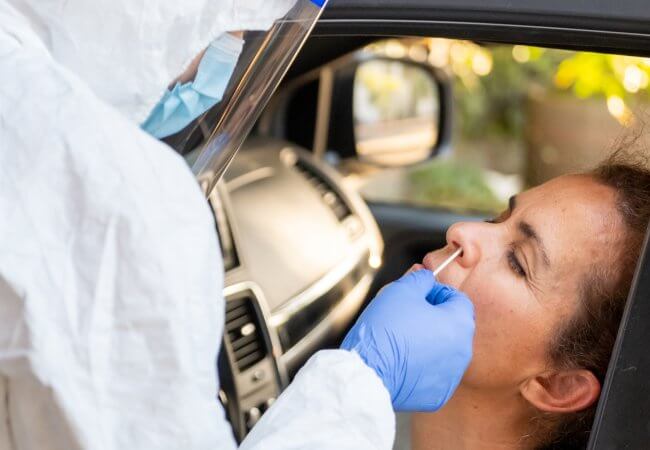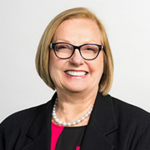
Jul 10, 2020
Part 2 in A Series on Population Health in Nursing

On February 28, 2020, my colleagues and I concluded a major project on the future of population health and nursing (PHIN).
The next day, the first official death from COVID-19 was recorded in the United States.
Now, according to the Centers for Disease Control and Prevention, the virus has killed 132,056 Americans* and many more worldwide. It has drawn attention to many of our nation’s most severe inequalities — the same inequalities many Americans are currently protesting in the streets. We will be reckoning with the consequences of this disease and our society’s response to it for a generation or more.
Like most people, I process this disease in many ways — as a parent, as a citizen, and as a family member and friend to many people whose lives have been impacted by the disease. But primarily I think about it as a nurse.
All nurses feel compassion for the suffering this disease has caused. All of us feel solidarity with our colleagues on the frontlines and the patients they care for. All of us feel a desire to respond to this crisis with the skills of advocacy and education that make our profession unique, as well as new lessons we are learning from scientific analysis and social innovation.
Each week, I discuss these issues with the other members of our Population Health in Nursing team. Even though our formal research project ended earlier this year, we’ve continued to meet so that we might better understand what our findings mean in this new environment.
In the coming weeks, we will be sharing some of those ideas in this space. We plan to offer insights into what COVID-19 and our nation’s awakening awareness of inequality mean to population health and the future of nursing. Specifically, we hope to address topics such as assessing social determinants of health, integrating new technological skills into practice, developing academic-practice partnerships, and strengthening the collective voice of the nursing profession.
But first, I thought our team should introduce ourselves by sharing the stories of how we have made sense of the pandemic as nurses over these past few months. I’ll start with my colleague who first had to deal with the virus and its impact, Mary Sue Gorski, RN, PhD, in Spokane, Washington.
Ma ry Sue Gorski: The COVID-19 pandemic reminds me about why I first got involved with policy, which was because I felt like I could more effectively improve patient care. Otherwise why are we doing this? That was on my mind when we saw how serious the pandemic was going to be, though even when the lockdown began in March we didn’t see how serious. I work with the Nursing Commission here in Washington State, and due to the need for nurses in the crisis, the governor challenged us to go from two weeks to award a license to 24 hours. The Nursing Commission hired and trained 25 people and within a relatively short amount of time we found out we could do it. But we are still facing many questions about our new reality.
ry Sue Gorski: The COVID-19 pandemic reminds me about why I first got involved with policy, which was because I felt like I could more effectively improve patient care. Otherwise why are we doing this? That was on my mind when we saw how serious the pandemic was going to be, though even when the lockdown began in March we didn’t see how serious. I work with the Nursing Commission here in Washington State, and due to the need for nurses in the crisis, the governor challenged us to go from two weeks to award a license to 24 hours. The Nursing Commission hired and trained 25 people and within a relatively short amount of time we found out we could do it. But we are still facing many questions about our new reality.
My message to nurses during this time is that we need to seize our power. I believe nurses can be much more influential in health care and we can use that power for positive change. We can be the leaders in so many different areas, from contact tracing to safe re-opening. To do that, we also need a very broad vision of our profession that in of COVID-19 in Chicago.
Su san Swider: I want to think about how we can respond to this crisis in a way that makes every nurse use population health knowledge and skills without necessarily turning everyone into a public health nurse. Adequately addressing the pandemic will require many different moving parts. There will be roles for everyone from students to clinicians to public health nurses to policy advocates. I want to think about how academic-practice partnerships and our nursing organizations can help all nurses find the best role to play.
san Swider: I want to think about how we can respond to this crisis in a way that makes every nurse use population health knowledge and skills without necessarily turning everyone into a public health nurse. Adequately addressing the pandemic will require many different moving parts. There will be roles for everyone from students to clinicians to public health nurses to policy advocates. I want to think about how academic-practice partnerships and our nursing organizations can help all nurses find the best role to play.
When I think about the nurses on the frontlines of this pandemic, I reflect on how effectively so many of them are doing exactly what they need to do. Other health professionals come in and out of patients’ rooms, but the nurses are the ones who are there over time with patients during their suffering and pain. That is what makes them such good advocates for patients’ needs. I would like to think about how we can use some of those experiences and stories to create broader change.
As for me, this pandemic makes me remember my early days as an ICU nurse. I remember more than a couple of nights when I had to strip down from my uniform in the dark, not wanting to bring anything into the house that might infect my young children. I also think about the years I spent in New Jersey government helping develop a comprehensive pandemic plan after the H1N1 and SARS outbreaks. It’s surreal to think about it, but the moment we were planning for has finally arrived.
Hearing the stories of nurses in this pandemic reminds me that we truly are the healers of humanity. You see that in the stories of our colleagues on the frontlines who may be the only person who can comfort a dying patient. But you also see it in nurses who are parents, neighbors, PTA members and Instagram influencers, all of them using their roles to help us respond to this moment in a way that is competent and humane.
My hope is that nursing organizations like ours can match the spirit of all of you in the field. We will have more to say on this in the coming weeks, but we would also like to hear your stories. If you would like to tell us your story of responding to COVID-19 or your thoughts on how our profession can respond to this moment of crisis, please comment below.
 Patricia A, Polansky, RN, MS, is the director of Program Development and Implementation at the Center to Champion Nursing in America.
Patricia A, Polansky, RN, MS, is the director of Program Development and Implementation at the Center to Champion Nursing in America.
*As of July 10, 2020 at 9:02 a.m. ET.
